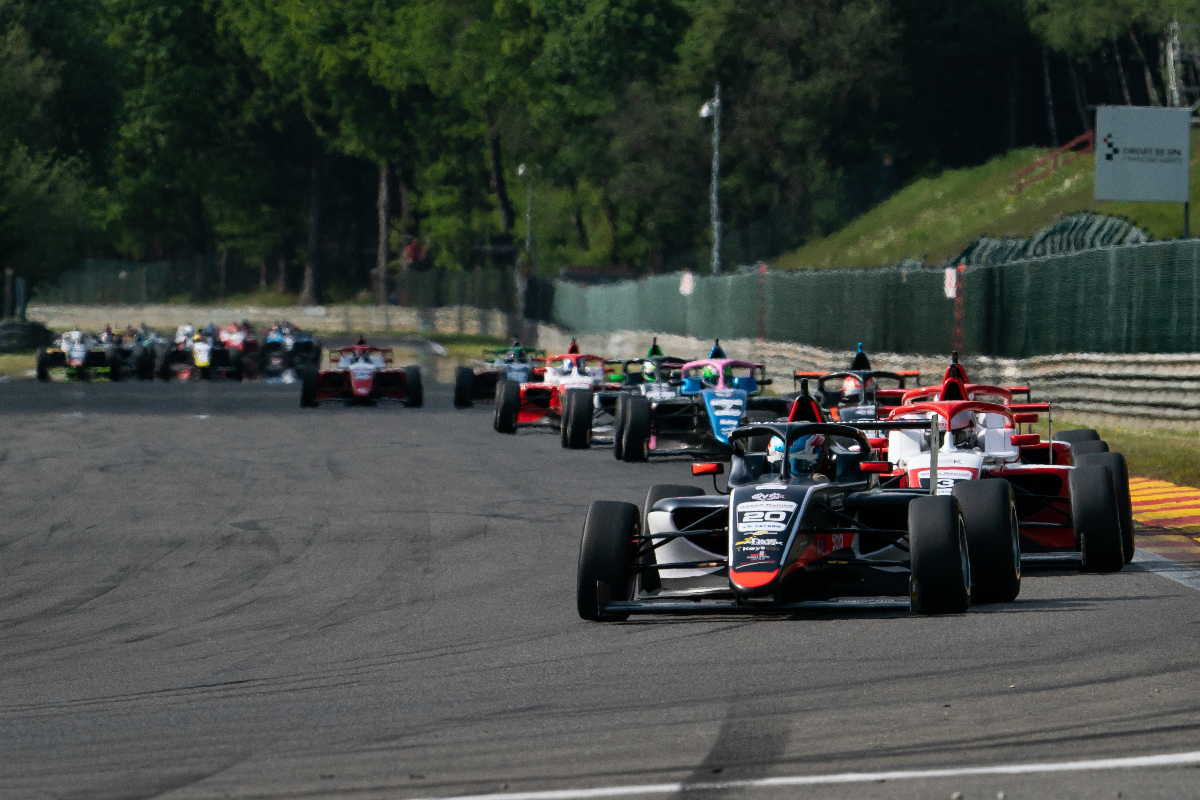
Photos: ACI Sport
There may have been some great drives at the front of the field, but the focus of the Italian F4 paddock last weekend was on the driving standards further down the order and the consequences of them
Spa-Francorchamps is one of the fastest, most famous and most fearsome race tracks in the world. It’s also to modern audiences seen as one of the most dangerous following Anthoine Hubert’s fatal crash there in a Formula 2 race in 2019.
Changes were made to Eau Rouge and the barriers beyond it following that incident, with the issue being that crashed cars were bouncing back into the track just beyond the blind crest at the summit of the corner. The approaching speeds of cars heading onto the Kemmel Straight means there is near to no time to steer out of the way once a crashed car becomes visible.
It makes every crash there a heart-in-mouth moment, and therefore made the antics of Italian Formula 4 drivers at the track last weekend particularly difficult to swallow. Thankfully nobody was injured, but several cars were left beyond repair and two races were shortened by red flags following scary crashes.
Race one was stopped twice, with red flags being waved the first time around after Airflow Racing’s Guido Luchetti and PHM Racing’s Viktoria Blokhina collided on the Kemmel Straight. Blokhina rolled several times, with both her and Luchetti’s out-of-control cars hurtling along the grass which lines the straight.
The race restarted, then was stopped again when AKM motorsport’s Davide Larini and US Racing’s Ruiqi Liu (US Racing) collided, with the pair ending up in barriers on either side of the track. Liu’s car then picked up further damage but was repairable for the next races, while Blokhina had to sit out the rest of the weekend.
Race two the next day was ended after Van Amersfoort Racing’s Ivan Domingues violently crashed at the top of Eau Rouge, after contact with team-mate Jack Beeton, and the angle he hit the barriers sent his wrecked car spinning back onto the track.
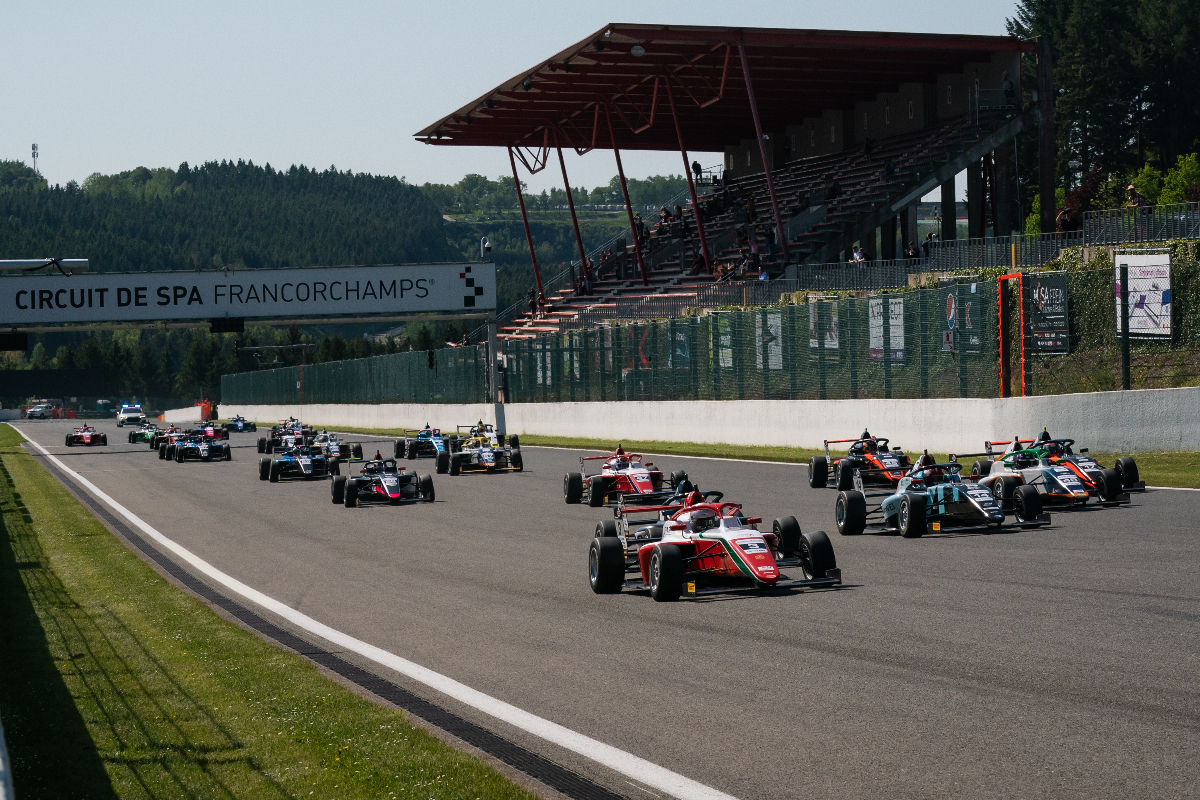 PHM’s James Egozi tried to avoid him by moving left, but drove into R-ace GP’s Matteo Quintarelli whose car was thrown skywards. Jenzer Motorsport’s Ethan Ischer then crashed right behind them, and several other cars were involved.
PHM’s James Egozi tried to avoid him by moving left, but drove into R-ace GP’s Matteo Quintarelli whose car was thrown skywards. Jenzer Motorsport’s Ethan Ischer then crashed right behind them, and several other cars were involved.
The velocity Quintarelli carried through the air meant that once he then hit the barriers his car then continued forward at a high speed while one side was crumpled against the guardrails. Domingues and Ischer’s cars came to a stop quicker, and circuit staff then set to work repairing the damaged barriers ready for the next series to race.
Beeton was excluded from the meeting for causing the incident, while Domingues’ chassis was beyond repair and he had to miss race three.
Those were just the incidents that stopped races, but there were many more that caused safety car periods and in race three there was something that concerned paddock members even more despite there being no crashes to speak of. Once drivers were getting onto the Kemmel Straight, they were attempting to break the tow to the cars behind behind weaving and that tactic became increasingly more extreme through the race meeting.
Between races two and three, Formula Scout spoke to several of the team managers about what they had witnessed on track.
Mikhail Aleshin, PHM Racing
“I mean we’re quite happy that Vicky is fine, and that actually shows how important the safety is nowadays, and how much it changed from some old days when I started to race. Because for sure you would not come out of a crash like that [uninjured]. So that’s the main thing.
“Okay, the car’s basically done for, but the most important thing is that the driver’s okay, that’s all that matters.”
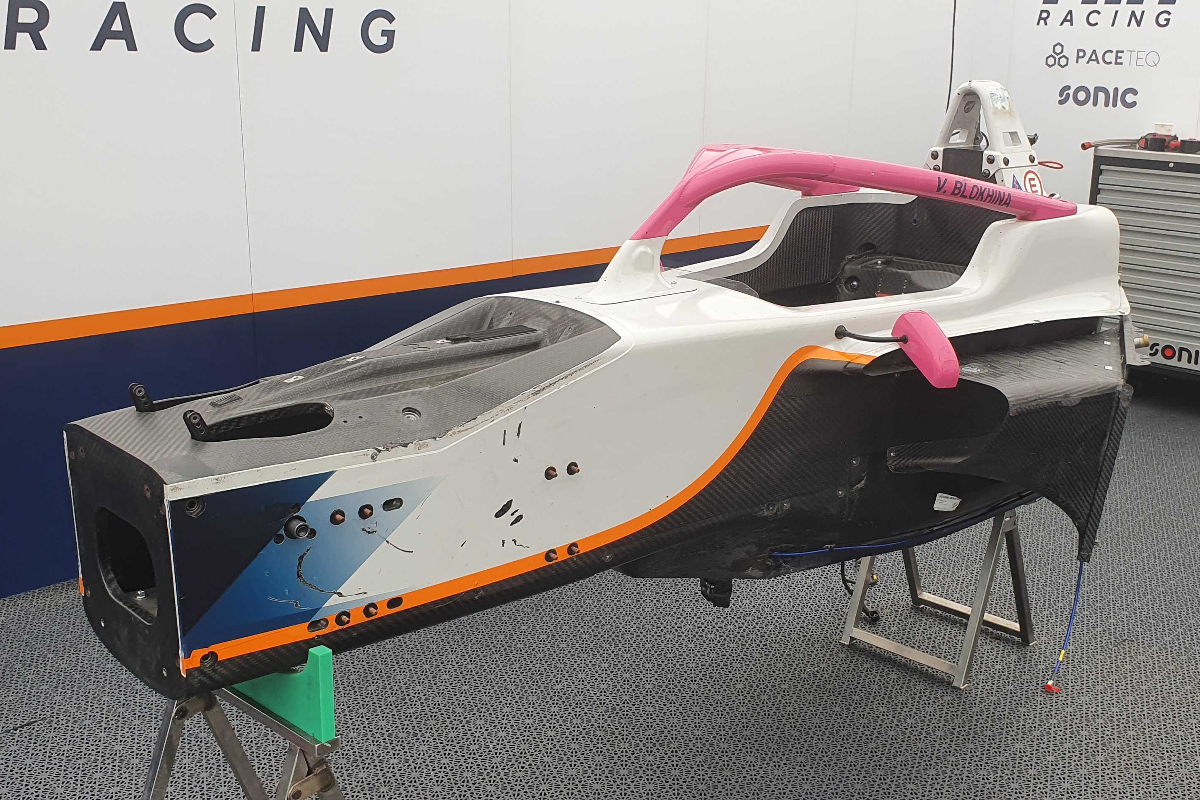
Photo: Ida Wood
At the opening round there were four races due to an oversubscribed entry list. Would splitting the field into seperate races before a final be a sensible approach at a track like Spa despite not having a capacity grid here?
“I don’t think that it’s the question of amount of the cars, really. I mean obviously if you would choose between to have 25 cars or 50 cars on the start, then yes. But we had 30 cars here in race two, and it was a huge crash anyway. 30 cars, it’s normal, it’s okay.
“Unfortunately it’s just for some of the drivers, especially who came straight from go-karts, it’s still a hard task to race these cars. And I remember myself, you just had to understand the the physics of the cars is compeltely different to the go-kart and it takes some time to get used to. That’s why you see all the time here situations like this.
“And especially at Spa, because it’s a high-speed track. So you need to think a bit faster, and sometimes the guy just doesn’t have enough experience for this. But that’s why we’re all here, to learn.
“And a test is one thing and the race is another thing. They all want to win, and sometimes it’s a little bit over the limit, as we see. But it is what it is. Kids are kids, they need to learn.”
Grazia Troncon, Prema
We’ve had a few car-destroying and injury-inducing crashes this season, just three rounds in. At Imola we had four races due to an oversubscribed grid, do you think it might be sensible for Italian F4 to consinder doing a four-race weekend elsewhere because drivers get used to racing each other, especially rookies, but on a less congested track?
“Honestly, I don’t like the format like karting [of heat races]. It’s not the real result of the quality of the drivers. So I’m more a fan of the format like this.
 “For me, this is always a tricky question, a tricky answer. There are drivers who are so young, and I think they have not really a ready mind to race in the track like this. So because they’re not able to really feel how dangerous it is, there is good [will] from one side, the driver, but they needed to be more clever. And there is time that you are ready to win, and there is time that you have to be ready to take experience. And to take expeience is not trying to be a hero in 20th place.
“For me, this is always a tricky question, a tricky answer. There are drivers who are so young, and I think they have not really a ready mind to race in the track like this. So because they’re not able to really feel how dangerous it is, there is good [will] from one side, the driver, but they needed to be more clever. And there is time that you are ready to win, and there is time that you have to be ready to take experience. And to take expeience is not trying to be a hero in 20th place.
“Because experience does come in with the race, so [not] everything is gained in qualifying. But it’s more I think it’s not because they’re not good enough, but they’re not ready on the mental side to accept to be behind.
“If [Prema driver Tuukka] Taponen was behind [the drivers crashing] because he had not a good qualifying. And why didn’t he qualify good? Because everybody was looking for the slipstream and at the end nobody take the time.
“But at the end it’s insane. They are crazy behind. It’s really so dangerous: they are not driving, they are thinking to be in the simulator. But the simulator can switch off and switch on, and nothing like this [in real life].
“For sure to have some fast tracks at the end of the season will help a lot to reduce this kind of problem. But I don’t know really, because I’ve said before also, my drivers were good enough to stay in front so they [avoided it]. Tuukka was really lucky, because we had the video from Tuukka, and he avoided a big, big crash by a few centimetres.
“So it was chaos, and I’m happy that it was [now out of the way]. Because for sure they didn’t realise really how much it’s dangerous to be a racing driver [until now].
“It’s not if you gain a position, it’s more important for them to see the chequered flag. But they didn’t understand really which is the limit. And they’re always racing over the limit. At the end, the result is four cars destroyed. No less than €400,000 damage done. Maybe for someone it can be also a budget problem, because at the end there is no insurance to cover this kind of accident.
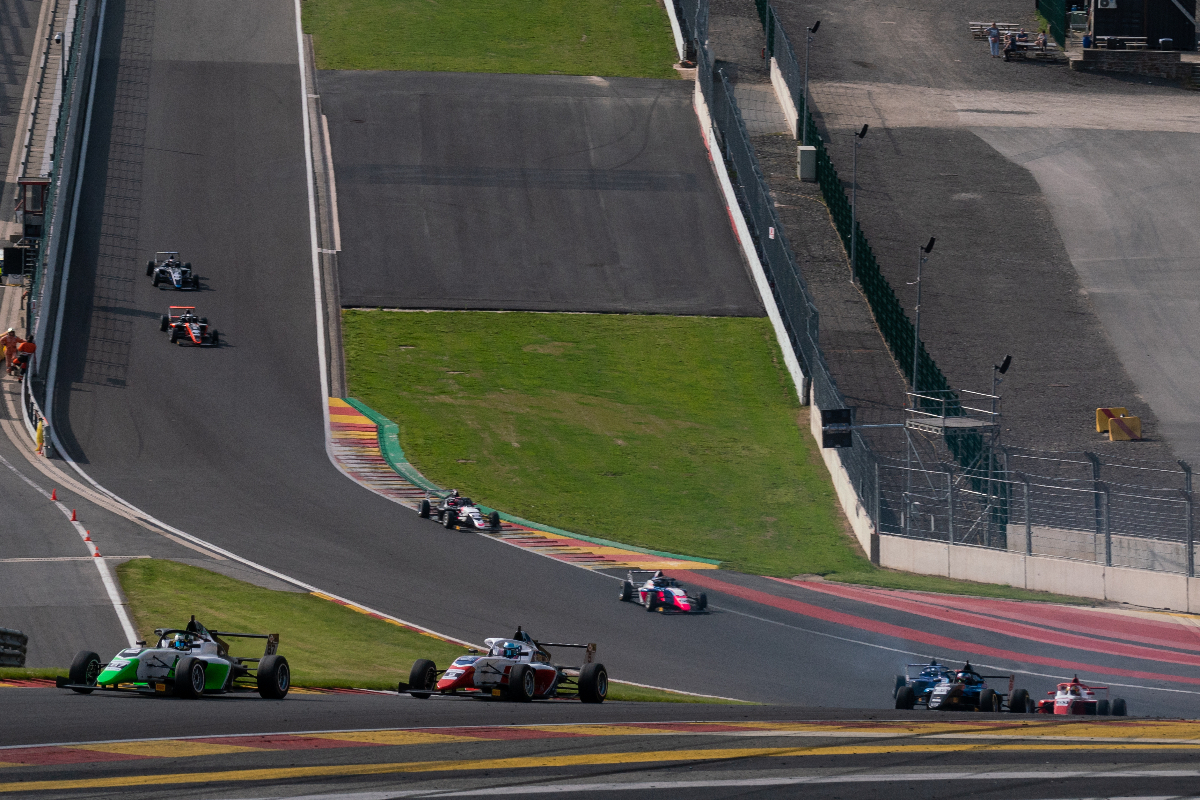 “And we are lucky that nobody takes any injuries. But at the end I think they are really, I don’t know what they have in mind. I understand that when you are young, you’re not taking care of everything [thinking they’re indestructable]. But… they need to be more [thoughtful].”
“And we are lucky that nobody takes any injuries. But at the end I think they are really, I don’t know what they have in mind. I understand that when you are young, you’re not taking care of everything [thinking they’re indestructable]. But… they need to be more [thoughtful].”
Andreas Jenzer, Jenzer Motorsport
We started the season with the split race format due to an oversubscribed grid. Since then we’ve had big incidents on fast tracks with inexperienced drivers. Your thoughts on potentially using split format again at more rounds, even when the grid isn’t oversubscribed, so drivers can get used to racing each other and we hopefully see less incidents?
“Okay, me, I was always a supporter of the format we had in the start of the season. Obviously it’s written down in the regulation that with that amount of cars, we have that format, with this amount of cars we don’t have the format. And it was also clear in the start of the season that the two non-Italian ACI rounds – Spa and Paul Ricard – that we will not have the chance because of the timetables [set by a different event promoter than the Italian F4-organising ACI] and all this.
“I have to say the accidents we are having at the moment are very hard to swallow and very hard to take. I think that the race director or the organisation needed to start to take some action earlier in the year with some of the drivers who are always involved in the accidents. In FIA Formula 3, F2, there is penalty systems with penalty points. Drivers need to be sat down and talked about.
“We have super safe cars, and sometimes it really looks like the drivers go: ‘Oh, my car is safe, I just keep my foot down’. And at Spa, I have to say when you exit La Source, up until the top of the Kemmel Straight, for me the car needs to go straight and the car doesn’t need to drive a slalom line to go up there changing right, left, right, left to block the car behind. I don’t understand why drivers are doing this…”
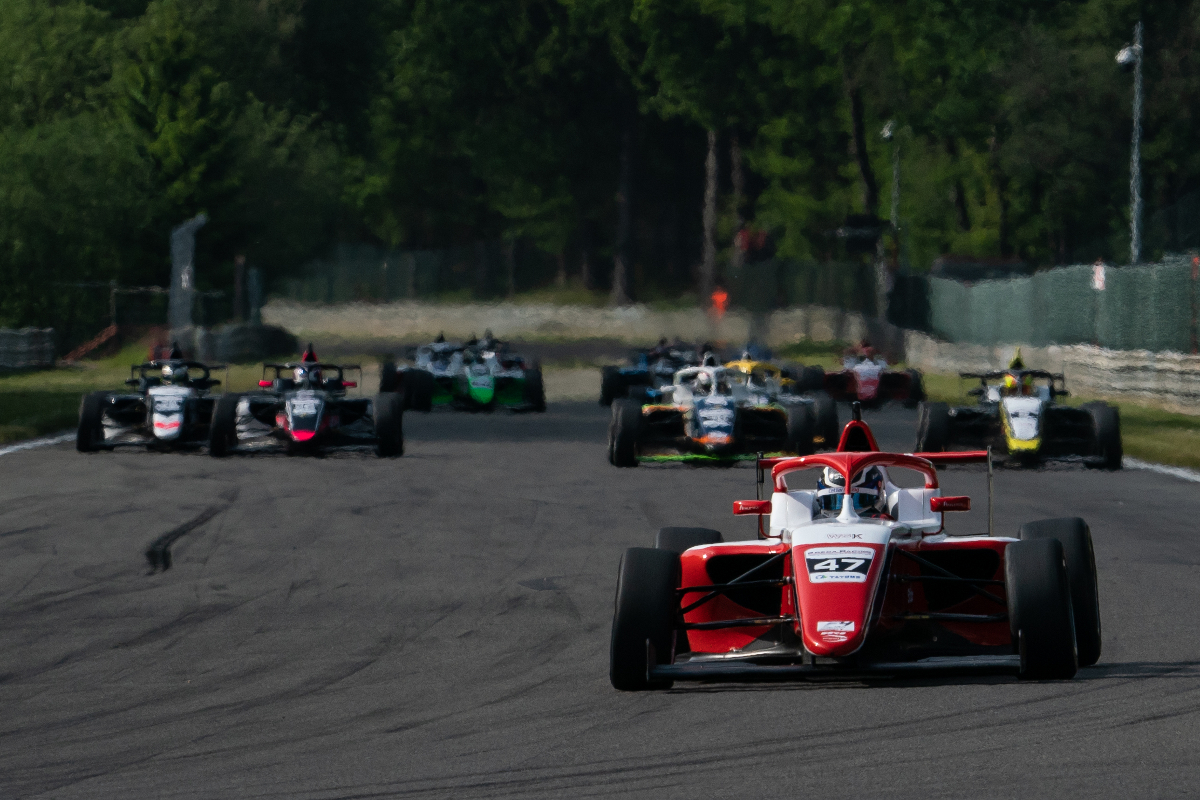 Would it be a good idea to move Spa and other fast tracks to the end of the season so drivers gain more experience before racing on them?
Would it be a good idea to move Spa and other fast tracks to the end of the season so drivers gain more experience before racing on them?
“Obviously this always helps. We had the same situation actually in Italy with Monza at one stage, and organisers immediately understood this situation not to have Monza at the start of the year, to have it more in the middle to the end of the season because it’s a high-speed circuit, it’s a very fast car. At the moment there is not a high level of respect from drivers to other drivers in their driving styles.
Is this the way they learn? It goes wrong and they find out that’s what happens…
“Yeah, and it’s big costs to the teams, and lucky there is no damage to drivers. But we should not be forced to having a hurt driver in the future [to learn this].
“In 2005 in Formula Renault 3.5, there was this huge Pastor Maldonado accident in Monaco, and there was a huge accident at Zolder also. Drivers were, you know, [reckless] with these cars that could do 250, 300kph. It was a really big accident, and then Renault Sport made a decision to have special briefings, to have special sitdowns with the drivers, with all of them, and point fingers. And I have to say, the driving changed like [clicks fingers] this [and Maldonado was banned for four races].
“What they are doing here is they have Scuala Federale. So they are going to see [all the drivers’ onboards], sit down after things, they will be sat down now at three o’clock, and they will go through this.
“But you know, you sit in there and you hear so much laughing and giggling. Well the lauging and giggling stops when somebody gets hurt. Maybe they need to show them the bad accident from Hubert, that something sinks in. I have to say, I am doing this for 30 years, and I see a lot, a lot, a lot. I am only in junior categories, but the driving behaviour is quite bad, it’s quite bad right now.
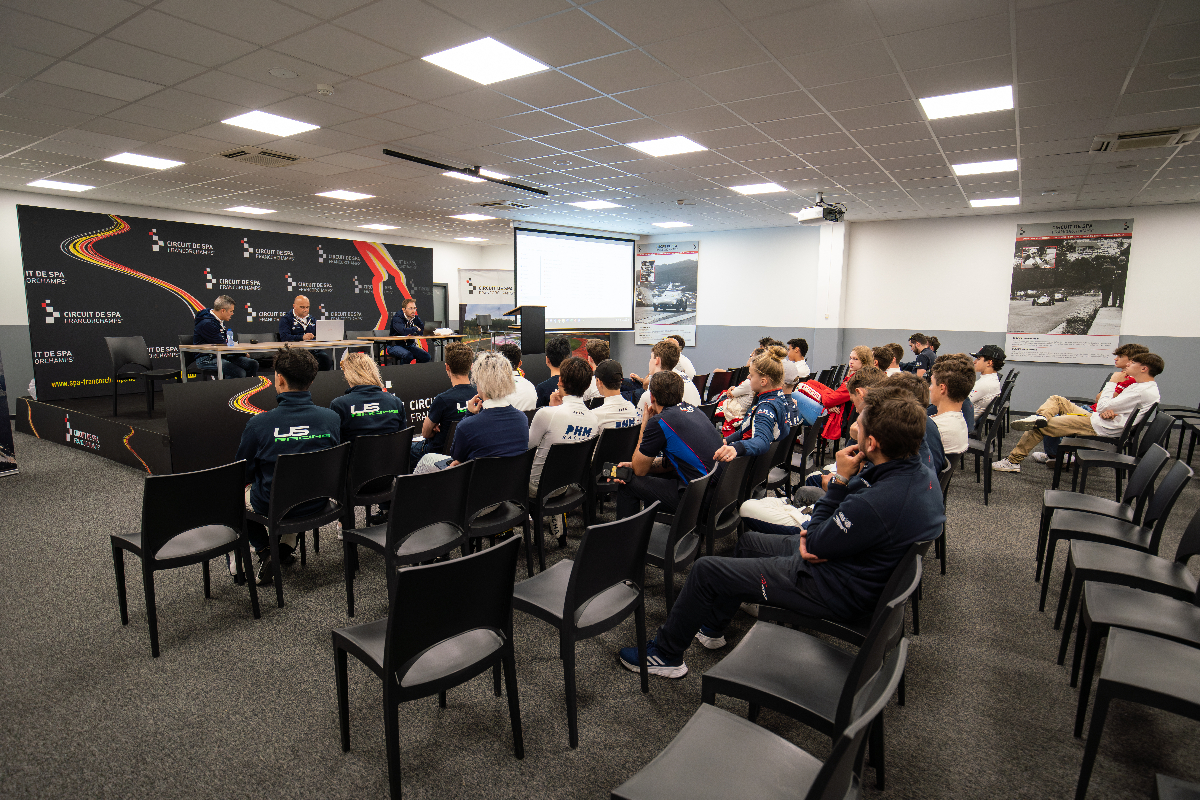 “Tracks get safer, cars get safer, and the dads seem to just pay it. Also we have to be careful because if we have one like this, maybe we have a driver less [without a replacement chassis].
“Tracks get safer, cars get safer, and the dads seem to just pay it. Also we have to be careful because if we have one like this, maybe we have a driver less [without a replacement chassis].
When there are crashes like this, how does that impact your insurance policy for the next season?
“The insurance policy of this car went 40% up for 2023 season with my insurer, and I have been insured by them since 1998, and they’re a good company. And I am really, really worried about next year if he is even able to get insurance on the cars anymore.
“The FIA F3 insurance policy went up three, five percent for this year. The insurance policy went up 40% for F4 this year. And there was no massive accidents last year, but there was accidents. But this year, it’s massive the amount of accidents, it’s massive. I am a little bit worried about it.”